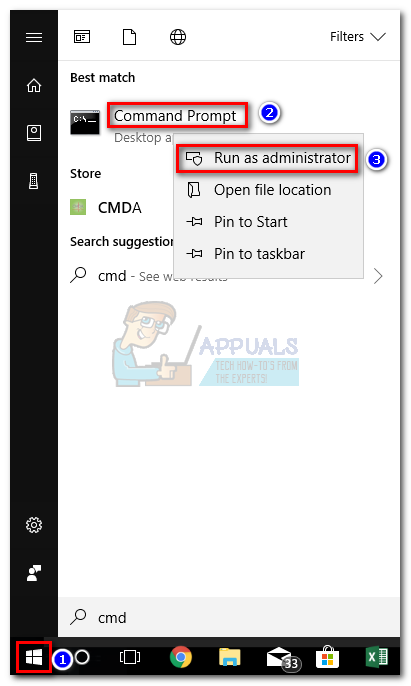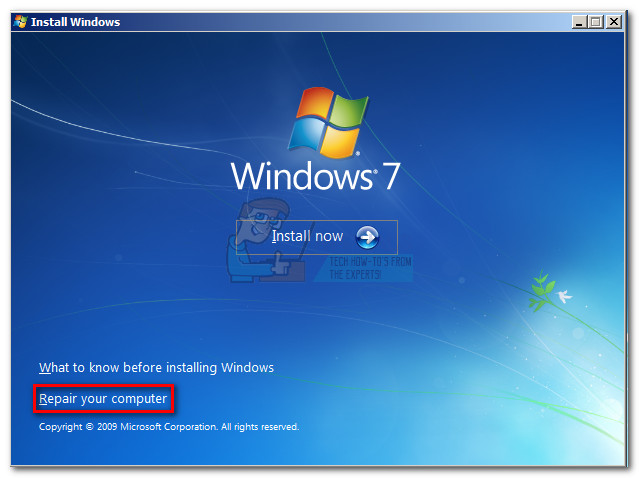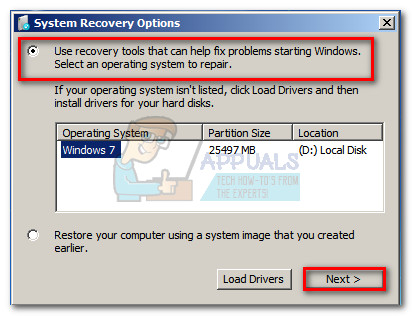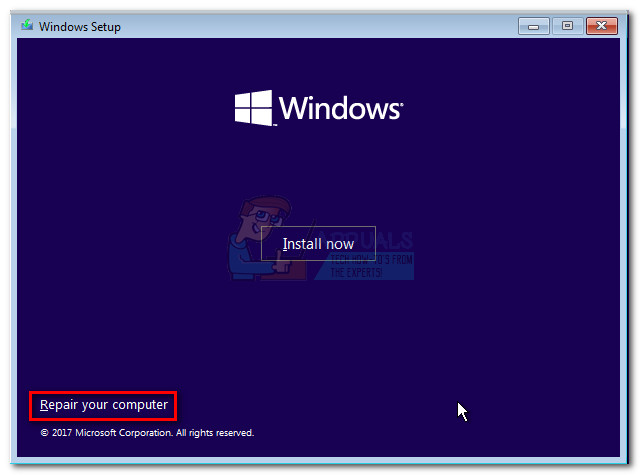What is CHKDSK?
CHKDSK is a command of Windows command line that is used to run the utility known as Check Disk. The main purpose of the Check Disk utility is to make sure that the computer’s files and the file system are in a logical order. In addition to this, it also checks the physical disk to see if it holds any damaged sectors. In the event that it finds any damaged sectors, the utility will automatically try to recover data from them (given that the right command is provided).
Fixing the “cannot continue in read-only mode” error
If you’re currently struggling with this particular issue, there are two ways that will help you bypass the “cannot continue in read-only mode” error. Please follow the two methods below in order. If the scheduled chkdsk fails, move down to Method 2 and follow the steps to run the Check Disk utility from Recovery Options.
Method 1: Scheduling a CHKDSK on Reboot
If you’re scanning a system partition, there’s a high chance that you’re seeing the “cannot continue in read-only mode” error because the disk is currently in use by another program. If that’s the case, the issue can be bypassed by scheduling a CHKDSK scan on reboot. This will trigger a scan of the Check Disk utility before another program gets the chance to use the drive in question. Follow the steps down below to schedule a chkdsk scan on reboot: In the event that scheduling the chkdsk scan didn’t trigger it at the next startup, continue with Method 2.
Method 2: Running CHKDSK from Recovery Options (Advanced options)
If the first method has failed, you’ll probably manage to run the chkdsk scan from the Recovery Options (Windows 7) or Advanced Startup (Windows 10) – the hard part is to get there. Depending on your computer, you’ll likely need the installation media in order to access the Recovery Options (Advanced Options). Note: If you don’t have the installation media, consult our in-depth articles about creating one for Windows 7 (create windows 7 bootable usb or dvd) or Windows 10 (create windows 10 bootable usb). Because the exact steps of getting to the Recovery Options are different depending on the Windows version, the guide below is split into two sections – one is tailored for Windows 7 and one for Windows 10. Please follow the steps appropriate to your Windows version.
Running CHKDSK from Recovery Options on Windows 7
Now you should be able to run the chkdsk command successfully from here. Depending on what you’re trying to achieve, consider using one of the following commands: chkdsk x: – locates errors but doesn’t fix them chkdsk x:/f – locates and fixes errors without scanning for bad sectors chkdsk x:/r – locates and fixes errors as well as scans for bad sectors (and repairs problems found). Note: x is a placeholder for your drive letter.
Running CHKDSK from Recovery Options on Windows 10
Note: If you don’t have the installation media, you can force Windows 10 to start into Advanced Startup by forcing two (or three) consecutive failed startup attempts. In order to do this, shut down the machine unexpectedly when it’s in the middle of booting up. Note: x is a placeholder for your drive letter.
chkdsk /f /r vs chkdsk /r /fHow to Fix Folder Keeps Reverting to Read Only on Windows 10[FIX] Error 0XC00D3E8E on Windows 10 (The Property is Read-Only)How to Make a Discord Channel Read-Only?









